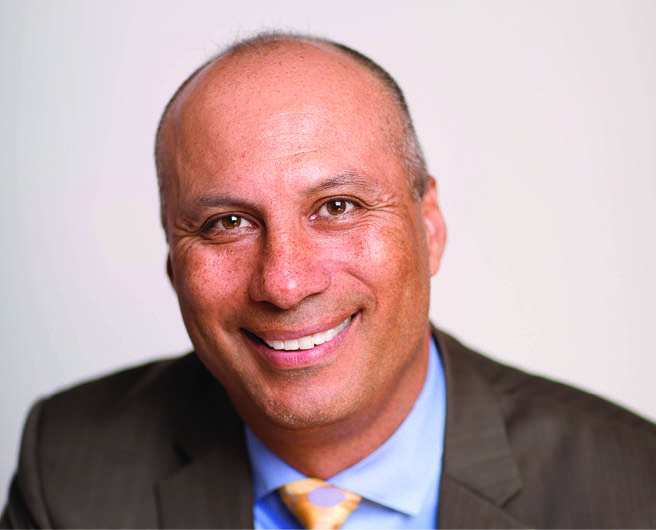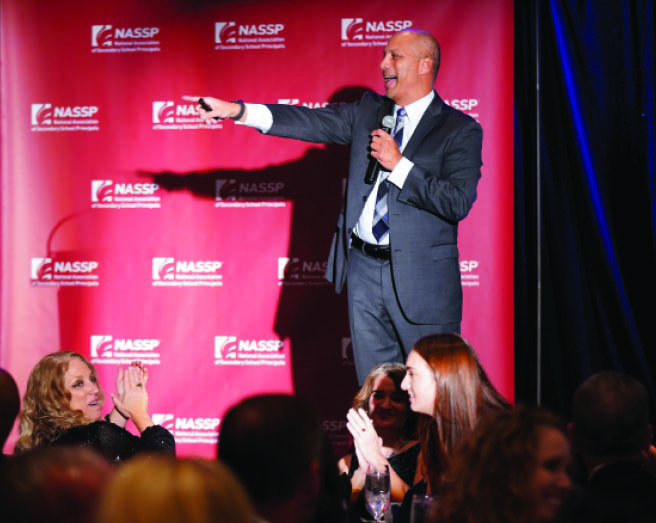The Interview Chair

I recall a conversation I had with an English teacher about a toxic colleague. During the conversation I noticed her eyes begin to tear up. It was clear that she had been deeply wounded and that she was still reeling from the effect of it all. “Is it possible this person didn’t mean to hurt you?” I asked. “Oh no,” she said. “Everyone around here knows how she is. In fact, this is how she treats everyone.” Have you told her how you feel?” I continued. “No, I am afraid to,” she responded. I hesitated and then I asked her, “Have you shared your concerns with your principal?” “Yeah right,” she said. “He is scared of her, too.”

In my work as a leadership coach today, it is not uncommon for people to share similar stories with me privately. How sad it is when someone is allowed to cause so much personal disruption to others on our campuses to the point it makes good people want to walk away. There is just no justification for our schools—or any work environment for that matter—to allow such toxicity to go unaddressed. Yet, it continues. The scenario above is playing out each day in schools across the country on such a regular basis that it has led me to ponder this question: Is this a teacher issue or a leadership issue?
Admittedly, the scenario above was eerily familiar. During my early years as a principal, I struggled, often hesitating and never quite feeling confident enough that I could manage the plethora of problems that came my way. Eventually, I found myself on the perimeter, blaming staff for my failed results. After all, it couldn’t be me creating the undercurrents that were hurting our culture and negatively impacting staff morale.

Twelve years into my principalship I had become increasingly frustrated, and I was ready to leave the profession. I had officially lost my way. With the support of caring mentors, though, I began the long journey of finding my way back to where it all began—the interview chair. The interview chair is where I convinced a committee of people by my responses to their complex scenarios that I was the best person for the job. They heard my words, they saw my passion, they felt my heart, and they believed in me. They believed that I could successfully lead the staff and school to greater heights. If you currently find yourself on the perimeter blaming your staff, questioning your impact, or doubting whether or not it is all worth it like I did, I am asking you to join me back in the interview chair. Take time to recalibrate how you are responding through your words and actions so you can bring the best version of you to school each day.
Setting the Tone
My experience has taught me that many of the fires that exist at the building and district levels are started by principals and district leaders—not intentionally—but rather by allowing people to behave however they want to behave. If we expect teachers to foster a positive culture and climate in their classrooms by how they manage themselves with students daily, then I believe as school and district leaders we must hold ourselves to the same standard.
Undeniably, we set the tone and determine what we are willing to tolerate and the standards we set and expect when it comes to employee conduct, as well as the manner in which we ourselves address concerns brought to us by others. Ultimately, we are responsible for managing our own interactions with staff appropriately. It also means we must be willing to address negative behaviors that can quickly destroy the very fiber of a healthy culture we are so desperately trying to foster.
Many school leaders have told me they are struggling with how to address cultural issues they are facing in their organizations. To be fair, the challenges brought on by the pandemic have only intensified these issues. Below I share potential undercurrents and provide reflective responses from the interview chair to help you, the reader, minimize or avoid them altogether.
- Remove the word “they”: Do your best to remove this from your vocabulary unless you can ensure it will be followed by a positive comment. Unfortunately, the word “they” is often used to place blame on others or give excuses. Replace “they” with “we,” in order to send the message that we are all in this together, regardless of the outcome. Collective efficacy is the first step in moving toward success for your organization.
- No more labeling: As adults, when we make mistakes or bad decisions, we often want others to withhold judgment, forgive us, give us a second or third chance, and not label us. Kids want and need the same thing from us. The student we label as a problem needs us during their most challenging moment. Reframe your thoughts so you don’t see them as a difficult student, but rather as a student going through a difficult time.
- Avoid delayed consequences: The administrative team must work together to ensure that student referrals are addressed promptly. This needs to be consistent among all members of the administrative team. When a staff member issues a behavioral referral and does not receive communication back from the administration before the student returns to class, this can create resentment among even your strongest teachers.
- Build 100% consensus: When was the last time you felt it was important to build consensus to move forward, but then found yourself moving forward anyway because you couldn’t come to a consensus and get everyone to agree and land on that 80/20 rule? You’ve heard of it, right? Get 80% of your staff on the bus or the bus will leave without them. The problem with this approach is that the 20% who don’t get on will likely not be committed, and this gap will create a division between them and the 80% who came to a consensus and are completely invested. Building a consensus requires us as leaders to develop a disciplined, systematic process for getting as many members of the team on the bus as possible and inspiring them to invest in what we are trying to accomplish. One simple recalibration on our part can lead to a better outcome for our overall culture. For one, a 10% increase in consensus because we used a more effective process gives us a better result and reduces the division among the staff, thereby improving morale. Secondly, understand the “why” of those who chose not to join the others on the consensus bus. Third, continue to find ways to support, invest in, and influence those staff members who are not in agreement with the initiative, so they do not feel isolated from the majority.
- Don’t depend on the same staff: Every organization has a group of people who have a desire for more leadership roles. Be grateful that you have a core group from which to begin building capacity, but you cannot increase your capacity if you depend on the same people over and over. Give others the same opportunities by giving them a seat at the table, empowering their voice, trusting in their abilities, and showing your confidence in them by modeling, observing, and providing coaching feedback to set them up for success and help move your school forward.
- Stop allowing students to be removed from class: I am referring to minor infractions here: sending a student out of class for lack of supplies, talking too much, refusing to work, sleeping, coming to class late or unprepared, etc. It sends a strong message that school is more about punishing than teaching students. Don’t be fooled by the notion that we need to teach kids “that is how the real world works” when they are not prepared or engaged. If that were true, I’m afraid of how many times we would be sending staff members home for similar infractions.
- Don’t outsource relationships: We know that jeans days, wellness events, mental health days, additional preps, a reduction in duties, and other similar practices can have an immediate short-term positive effect on staff morale, but it has proven time and again that the benefit does not endure when we fail to change the way we treat others in our organizations. Added life stresses don’t just come from more work being piled on people; they are also compounded when people are treated in ways that devalue them. Effective leaders understand that it is not only what we know about our students and staff but how we treat them that determines how healthy our culture is.
Owning Our Responsibility
I am not suggesting that we as leaders will always perfectly address the items I’ve listed above. None of us are immune from mistakes. But let our failings in time management be the result of dealing with too many issues on our plate, rather than failing to address them out of fear. There is no excuse as leaders to not continue to improve and develop our skill sets to avoid the undercurrents that can damage our school culture.
Our students and staff deserve to learn and work in a caring culture. As leaders, we must own this responsibility and demonstrate the courage to confront such issues rather than avoid—or worse yet, ignore—them for fear of what repercussions might come our way. Remember, when staff is not performing their work or conducting themselves at the high level that students, parents, and their colleagues deserve, ask yourself this question: “Is this a teacher issue or is it my issue because I have failed to acknowledge and address it?” My guess is, in most cases, it will be a leadership issue that we must own.
Go back to where it all began: the interview chair. Reflect on your responses to those interview questions and remind yourself what you said you were going to do when you became a principal. That is the real you.
Time to recalibrate!
Jimmy Casas is the author of nine books including Recalibrate the Culture: Our Why, Our Work, Our Values, from which parts of this article are drawn. A former principal, he is the 2012 Iowa Secondary Principal of the Year and the runner-up 2013 NASSP National Principal of the Year. He will be a keynote speaker at Ignite 2023 in July.
To register for Ignite 2023, visit ignite.nassp.org.
